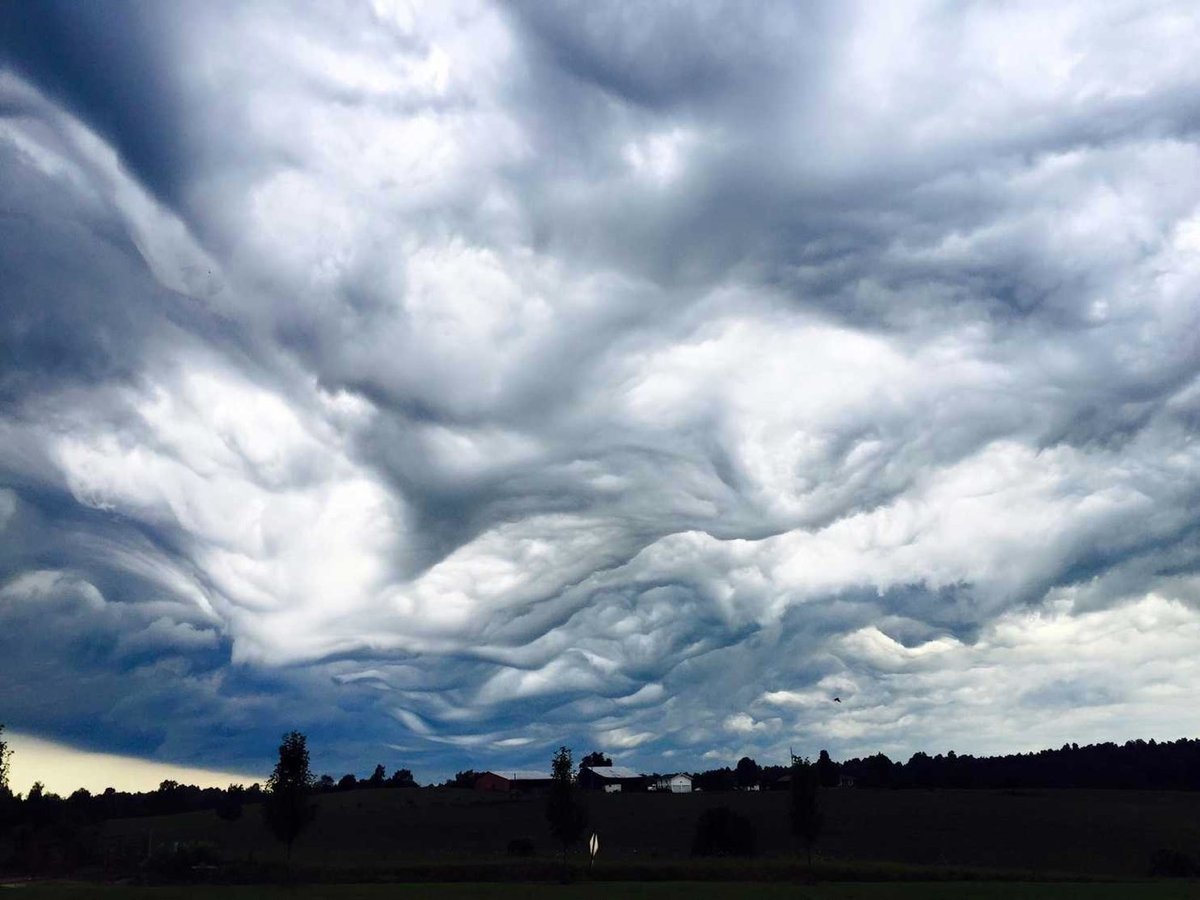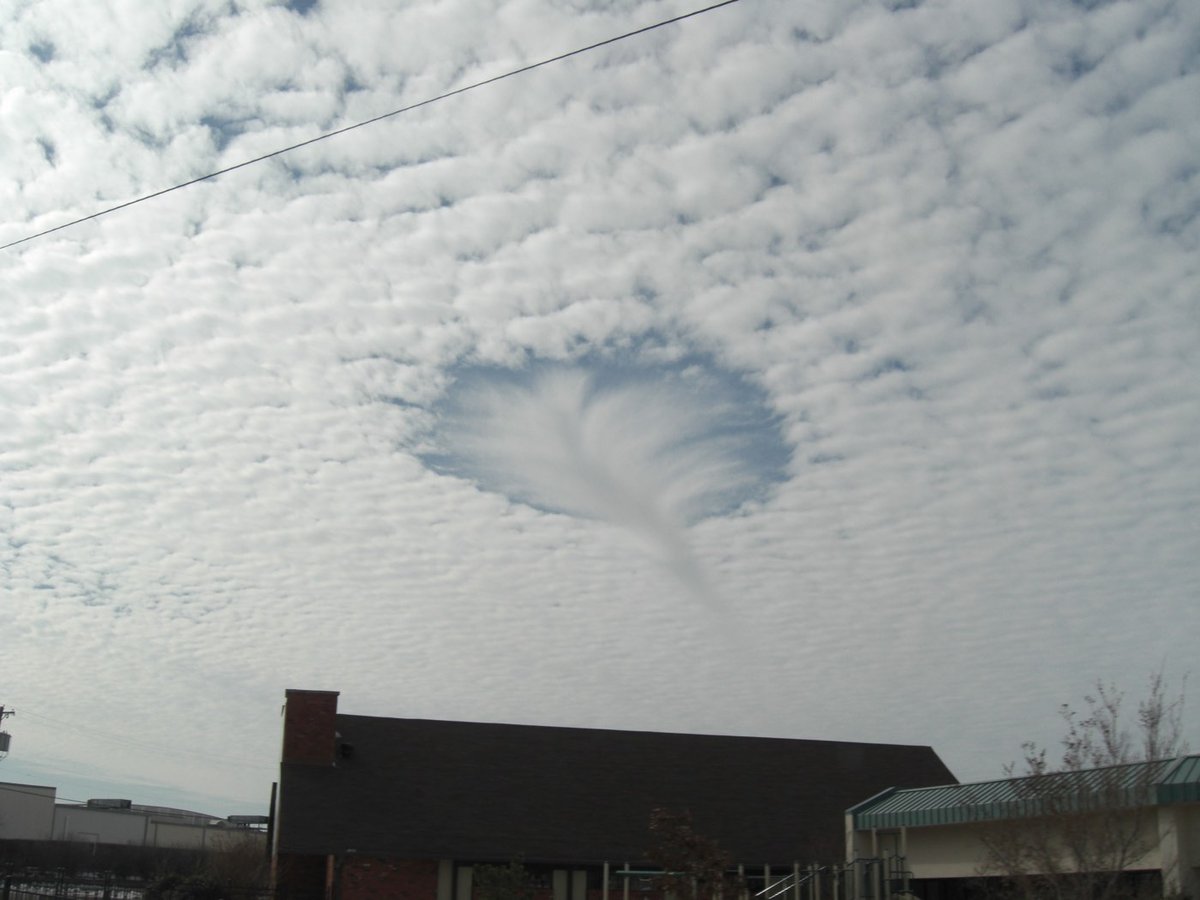Meet this season’s hot new clouds


For the first time in 30 years, the world’s cloud authority has classified a dozen new types of cloud. You can find them in the International Cloud Atlas, published by the World Meteorological Organization.
The existing classifications have been reviewed and all have been retained. Several new, formal cloud classifications have been introduced. These include one new species (volutus), five new supplementary features (asperitas, cauda, cavum, fluctus and murus), and one new accessory cloud (flumen). The species floccus has been formally recognized as being able to occur in association with stratocumulus. The separate section on Special Clouds has been removed, and the cloud and meteor types previously discussed within this section have been integrated into the cloud classification scheme as cataractagenitus, flammagenitus, homogenitus, silvagenitus, and homomutatus.
The cloud in the second photo is a cavum cloud, which is not so much a cloud itself as a hole in a altocumulus or cirrocumulus cloud. The cloud in the top photo, the one that looks like a van Gogh painting, is an asperitas (formerly known as undulatus asperatus). The asperitas is best seen in motion:





Stay Connected